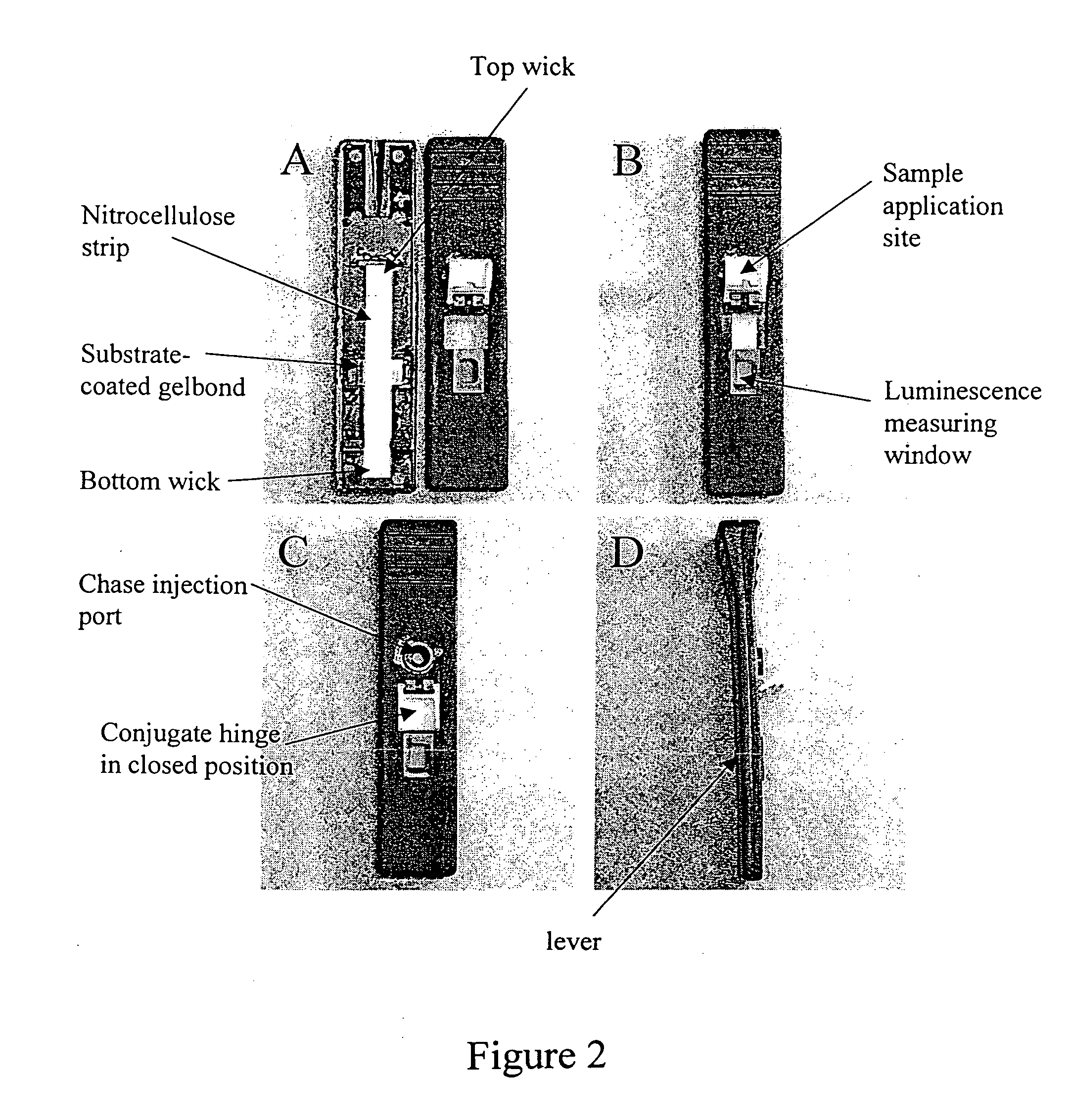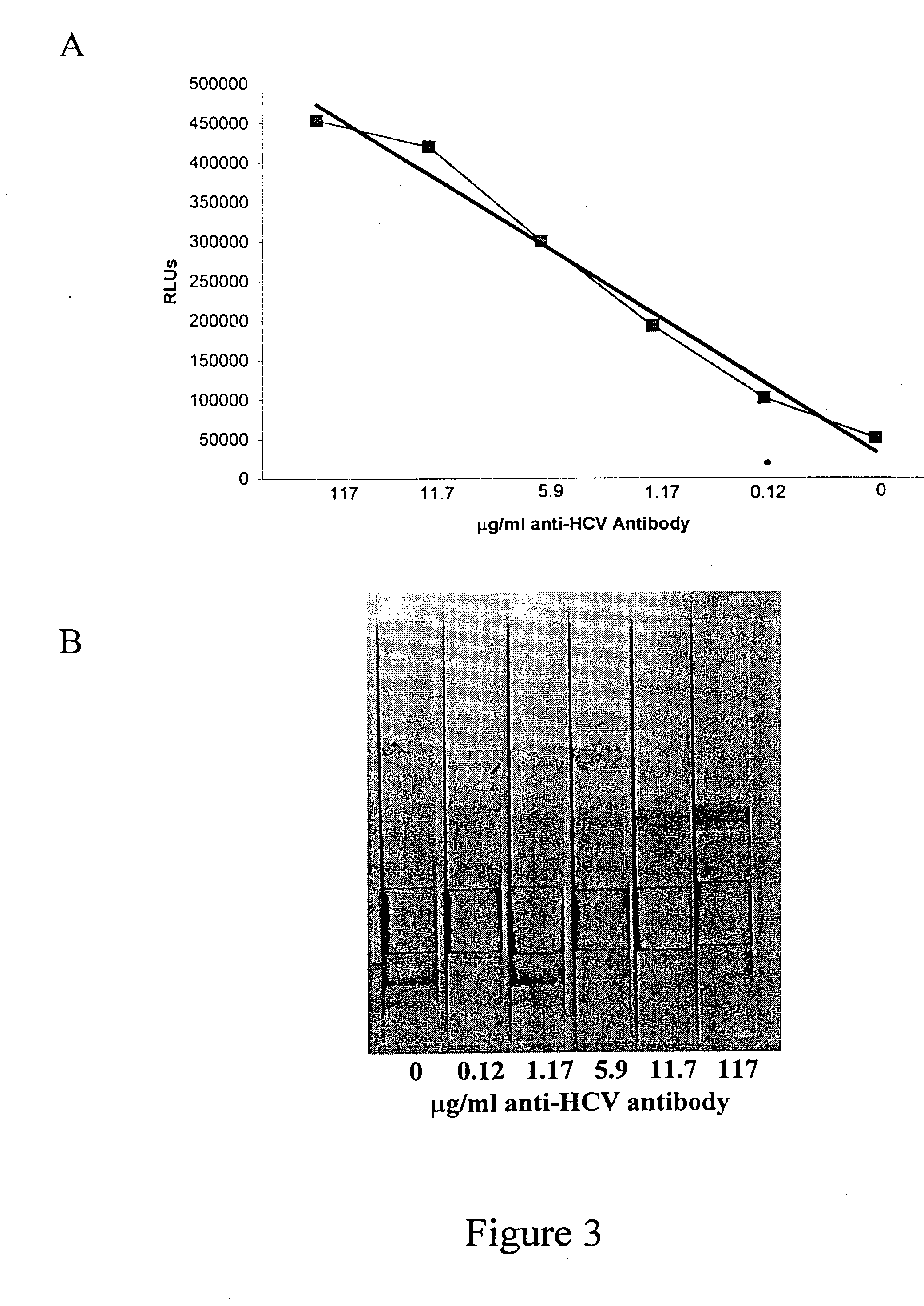Oral fluid rapid assay for hepatitis C virus (HCV) antibodies using non-antibody labeling of IgA molecules recognizing HCV peptide epitopes
a technology of hcv and oral fluid, which is applied in the field of oral fluid rapid assay for hepatitis c virus (hcv) antibodies using non-antibody labeling of iga molecules recognizing hcv peptide epitopes, can solve the problems that prior art assays have not achieved the sensitivity and specificity required to rapidly screen hcv infection in human oral fluid, and achieve enhanced anti-hcv detection ability, rapid screening, and large reduction
- Summary
- Abstract
- Description
- Claims
- Application Information
AI Technical Summary
Benefits of technology
Problems solved by technology
Method used
Image
Examples
examples
I. Detection of Multiple Classes of Anti-HCV in Oral Fluid to Increase Detection Sensitivity.
The detection of multiple classes of anti-HCV in oral fluid can increase the H detection sensitivity of the Ortho HCV 3.0 ELISA to levels comparable with those attained using serum samples. Patients for this study were pre-selected from one of eleven participating clinical sites and shown to be either HCV positive or negative based on a clinical diagnosis according to the CDC testing algorithm (Alter et al., 1998). Serum samples were further confirmed by repeat in-house testing using the Ortho HCV 3.0 ELISA following the manufacturer's instructions. Oral fluid samples were collected using a Salivette (Sarstedt Research, Germany) whereby a polyester-coated cotton plug is placed in the mouth of the patient until saturation and is then centrifuged in a carrier tube for 5 minutes to extract the oral fluid. The Salivette was chosen for its ease of use and because it does not use a sample buffe...
PUM
| Property | Measurement | Unit |
|---|---|---|
| Affinity | aaaaa | aaaaa |
Abstract
Description
Claims
Application Information
 Login to View More
Login to View More - R&D
- Intellectual Property
- Life Sciences
- Materials
- Tech Scout
- Unparalleled Data Quality
- Higher Quality Content
- 60% Fewer Hallucinations
Browse by: Latest US Patents, China's latest patents, Technical Efficacy Thesaurus, Application Domain, Technology Topic, Popular Technical Reports.
© 2025 PatSnap. All rights reserved.Legal|Privacy policy|Modern Slavery Act Transparency Statement|Sitemap|About US| Contact US: help@patsnap.com



